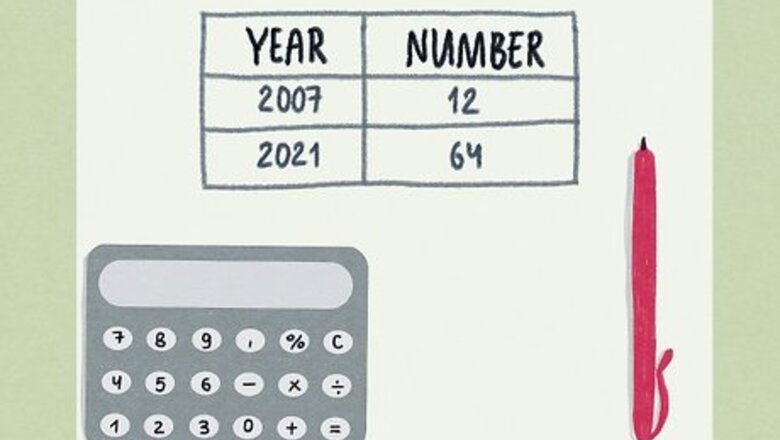
views
Write down the old value and the new value.
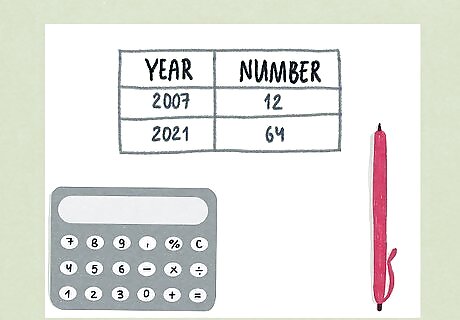
These are the 2 numbers that you'll use in your equation. Usually, these indicate the same statistic or topic and were gathered on 2 different dates. Gather your materials as well, including a calculator, a pencil, and paper to write out your formula and solve it. If you don't have a calculator, the one on your phone or computer will do just fine.
Subtract the new value from the old value to get the increase.
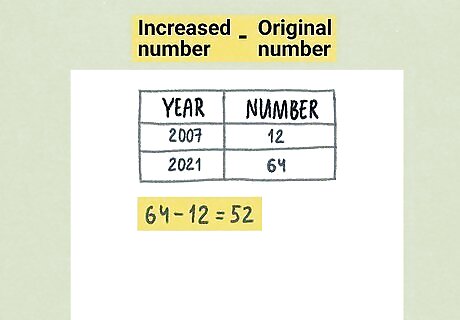
Write down the larger number (the number that has increased). Subtract the original number from the increased number. For example, write "the new amount" minus "the original amount" on your piece of paper. If you had 12 job prospects in 2007 and you have 64 job prospects now, then the actual increase would be 52 job prospects.
Divide the increase by the old value.
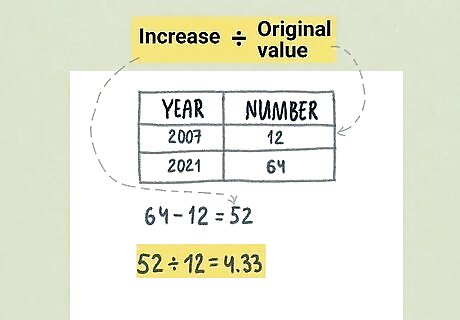
Use your calculator to get an accurate number. For example, let's say the original amount was 12 and it increased to 52. Take 52 and divide it by 12. The answer in decimals for this particular example would be 4.33.
Multiply the answer by 100 to get the percentage increase.
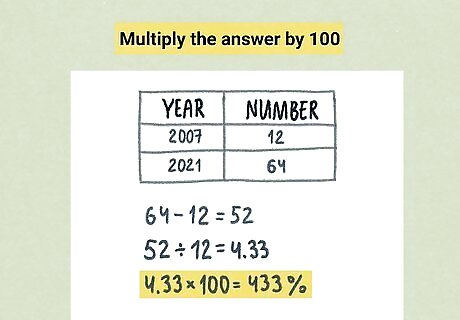
This is how you convert a decimal to a percentage. Take your answer in decimals and stay between 2 and 7 decimal points in your answer. The larger your change is, the more likely you will need extra decimal points for an accurate figure. Then, multiply the number by 100. The percentage you get is your percent increase. For example, multiply 4.33 by 100. This gets you a percent increase of 433%. Think of it this way—the word percent actually means "of 100," since "per" means "of" and "cent" means "100."
Alternatively, write down the old value and new value.
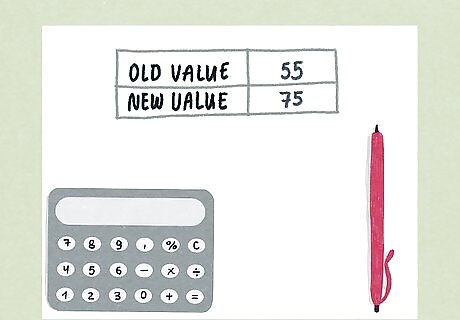
These are the 2 numbers you will use to calculate the percent increase. Gather your materials as well, like a pencil, calculator, and a piece of paper. If you don't have a calculator, use one on your phone or your computer.
Divide the new value by the old value.
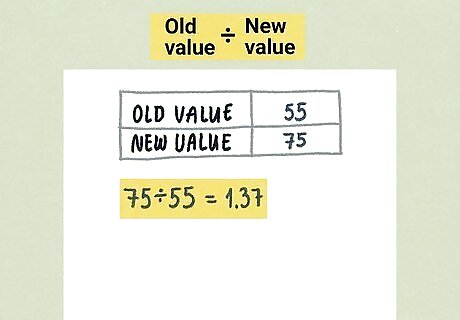
Plug the values into your calculator. Once you divide the new value from the old, you will get a decimal number as your answer. Write down that value. Let's say there used to be 55 Skittles per bag and now there are 75. Divide 75 by 55 to get 1.37.
Multiply by 100 to get the percentage.
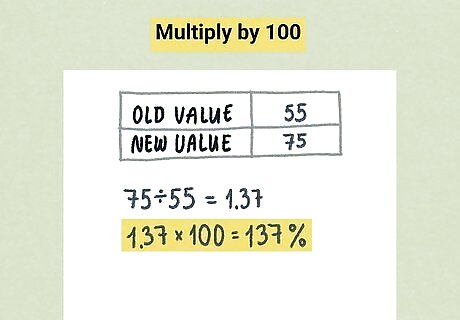
Use your calculator to plug in the two values. For example, multiply 1.37 by 100. This gets you 137%.
Subtract 100 to get the percentage increase.
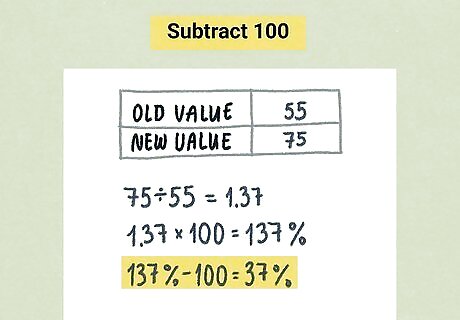
Use the percentage you just calculated. Using the example equation, subtract 100 from 137%. This gets you a percent increase of 37%.




















Comments
0 comment